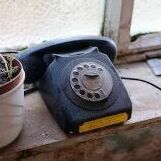

TandC
Member-
Posts
477 -
Joined
-
Last visited
Profile Information
-
Gender
Male
-
Occupation
Civil Servant
-
Boat Name
Tallis
-
Boat Location
Oxford
Recent Profile Visitors
6,175 profile views
TandC's Achievements
Proficient (7/12)
74
Reputation
-

Toplac Plus paint on original formulation Toplac
TandC replied to TandC's topic in Boat Building & Maintenance
Great thanks. more the point is can I change from Toplac original then onto Plus between coats - as it is, the last coat was applied around a week ago before the weather got quite so insane, so I doubt I'll overcoat that with the Plus for another few days yet, so nearer two weeks. I've been giving it the lightest of between coats sand with a softbacked 400 sponge, but more to remove the flies, aphids, wild turkeys, etc that have committed the ultimate sacrifice during my outdoor painting session... -
TandC started following Wood finishes , Toplac Plus paint on original formulation Toplac , TekDek or other deck covering systems? and 6 others
-

Toplac Plus paint on original formulation Toplac
TandC posted a topic in Boat Building & Maintenance
Morning all. I've been painting up the old boat using tins of the original formulation of International's TopLac. But now I've finished those and can't seem to buy the same any longer, all those odd tins on eBay have finally been sold... All there is available now is Toplac Plus.... can I just carry on using that without any problems? Last coat of TopLac original was applied last week, and if it cools down a bit later in the week I hope to keep going but using the TopLac Plus. -

TekDek or other deck covering systems?
TandC replied to TandC's topic in Boat Building & Maintenance
Thanks all. On further investigation I think it's a risk - as it's an enclosed stern arrangement any covering feels like it is going to be tricky to get it to fully drain out of the three little drain holes. I think it's better to go with a soft rubber mat and at least regular inspection, cleaning and drying will be possible. I've just saved myself hundreds of pounds! -
Can anyone share their thoughts / experience on Tek-Dek (http://www.tek-dek.com/tekdek_panels/) or other similar flooring systems used on rear decks to protect the paintwork from foot traffic etc, while also not holding water in a way that accelerates rust? I have a large cruiser stern area (10ft wide boat, awaiting its first full paint job) which is steel with a central recessed rectangular engine hole, drainage channels, covered with deckboard. The main entry door into the cabin is off-set to the port side, and so there will be a lot of foot traffic along the steel deck at that point. When it gets painted, it will be in two-pack paint. There will be a canopy/deck house at some point when funds allow, but there'll be a period when it isn't under a proper cover (I may rig something up to tide me over). Being liveaboards, that rear deck - particularly the steel area around the doorway, is going to get a lot of use over time - it will see dirty shoes, jumping on and off, etc. I've seen the impact of rubber mats left on decks before... water trapped underneath leading to rusting.... so want to avoid that. Is the TekDeck stuff worth a look? I presume it is stuck down onto the steel with the intent being to provide a permanent water-tight floor covering solution. But that makes me nervous. Any experiences appreciated. It is bloody expensive!
-
That's a really helpful video - shows pretty much the way we did it with a pattern - but using double-sided tape and polythene as the pattern material.
-
It's easy enough to make with some planning. You can buy stainless tube easy enough - it is hard to bend, I did ours using a large conduit bender - you won't do it with a standard pipe bender intended for softer copper. I measured up, drew out the shape of each hoop on a piece of plywood which I could lay my hoop onto to check that I was reaching the desired shape without over bending it etc. Then you can buy the stainless fittings easy enough - https://www.jclarkemarine.com/ have a good range - but as above, you can get from eBay etc. Drill and then rivet the fittings onto your tubes - cheap rivet gun did the job for mine. Making the fabric canopy is where the skill is. One option is to build your frame and get someone to make the cover. But, you can sew PU canvas with a standard modern machine - you can buy the centre-fold fabric for trimming edges, window material etc. Make sure you buy UV-resistant nylon thread to sew it with - easily available via the same companies selling the fabric. If you don't, the sun will degrade the stitching and it'll fall apart You can buy the fabric fittings too - turnbuckles, elastic hoops etc, rivet-on hooks etc. From my experience, sewing in the window material was hard - and i havne't bothered when I made a replacement some 15 years later. The design needs to allow plenty of "fall" off the canvas - as any water pooling will stretch the canvas and it'll end up baggy. I don't think ours looks as good as a professional one due to a bit of sagging - but it remains watertight. I did remake the cratch cover after about 15 years, but mainly because the cratch board went rotten. It hasn't cost me £5k ...
-
I think we bought our freestanding cooker from Argos - and was able to buy LPG - it's New World brand, cost about £300 and is absolutely rubbish. But then they all are....it's not that much worse that the £700 Belling one in the other boat. I'm resigned to the fact that they are all just a bit crap... You can buy conversion jets to swap in, which will convert from natural gas (larger jet size) to LPG (smaller jets). LPGJets.com is a very helpful website/company. So you could find your preferred option, contact LPGJets.com and see if they do a conversion set. Your gas tester / BSC inspector will want to see clean burning blue flame patterns which you can turn right down to a low simmer without going out. And, obvs they need flame failure devices - but I can't imagine any new-bought option doesn't have these now.
-
Put some effort into trying to stop the water getting in. That means looking at the deckboards, sorting out better drainage channels, stopping leaks through vents etc. Get a canopy. Use a container under the stern gland and a dedicated bilge pump. Our cruiserstern is over 75 years old now and it's take 20 of those to get it to stay dry! Then, use Jotamastic 87 two-part epoxy paint - it's as affordable as any paint system and is a lot more robust.
-
A neighbour has been using Chris Kemp of Canalside Heating & Energy Services to re-do the gas line to their boiler for them. He's turned up when he said he would... which is half the battle won with tradespeople these days! He is coming back to Oxford on Monday to finish their install so you should send him a message pronto - he may be able to fit you in too for a quick job like an oven install. He may be glad of an extra job to make his travel to Oxford more worthwhile (i think he lives on the GU down that London way). Hope that helps, e: 07740640355 Email: chris.kemp.bg@gmail.com
-
We have a freestanding cooker - hob on top, grill and then oven beneath in one unit. Originally the glass hob lid is hinged and there is a valve switch which is actuated by lifting up the glass lid, enabling gas to flow. When lid down, the valve remains closed so no gas can be accidentally released underneath the glass. It looks like a button towards the rear, near the hinge. As we removed the glass lid, our valve is held permanently OPEN by piece of metal that has been screwed into the cooker body. So maybe a valve?
-
I'd be inclined to stick with the original builder. It sounds like you are now in a position where whatever course of action you take there are going to have to be significant compromises on your original design, and/or costs. Moving it elsewhere will be a very expensive business - likely £5k just on lorry/crane minimum. And then you need to find someone/somewhere that will pick up the work - they're not likely to have a slot free if they're any good so that adds weeks of delays. Changing builder mid-way just introduces loads of opportunities to pass the buck or make excuses. You would be far better off trying find an agreed, shared outcome to the current situation.
-
hmmm.. The prop shaft is new (relatively) and so I could ask the supplier perhaps to try to ensure a match... but this is the sort of issue I thought likely. Just hope it doesnt come to it.
-
Okay - so feasible... not ideal.. but doable perhaps. I should have said, there is no prop on there currently. It's hopefully slide it on... washer/nut on... tighten up... . split pin through and bent.... whether or not the prop will fit through the weedhatch is a different story. this is all just theoretical at the moment anyway, I am just considering options on whether I can get the boat mobile without a slipway.
-
I can't imagine it's sensible... but would it be possible to fit a propeller to the shaft with the boat still in the water (shallows, marina, etc) .... standing in the water... maybe with a snorkel!? What's involved? is there a keyway on the prop shaft? Something super-fiddly that you just wouldn't be able to achieve without scuba gear? Where's Bizzard to come up with a DIY diving bell?
-
It's down to the selection of what timbers you like - with regard their grain, and then the finish. A lot of boats have oak veneered ply lining, and then solid oak trim pieces. But I feel it can look overwhelmingly orange. Ash is a paler creamier colour. Then dark woods from the mahogany family are the opposite end. That photo looks mostly like oak to me. As for finish - a hardwax oil like Osmo Polyx or Treatex - brush on in thin coats. And you choose a matt, satin or high gloss finish depending again on taste. Basically you need to do some tests. The oil makes all the difference.






